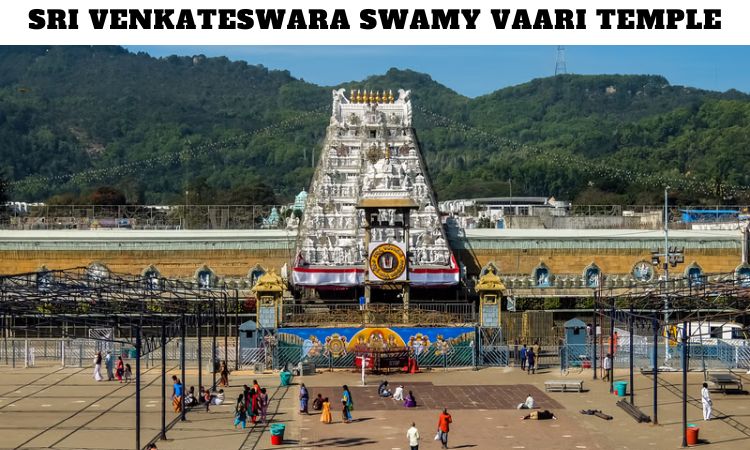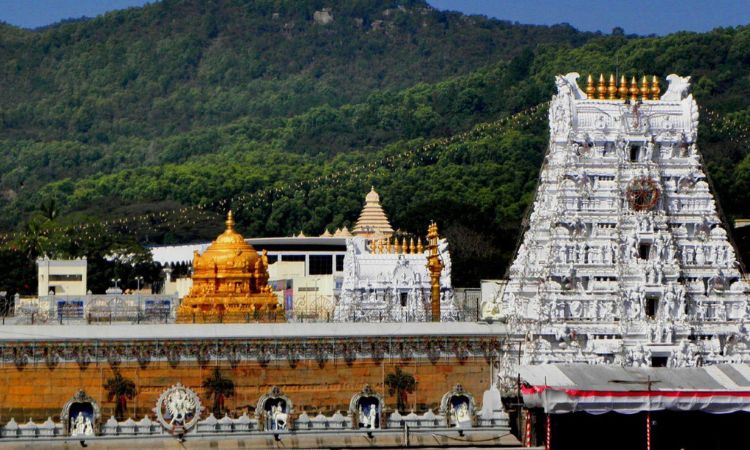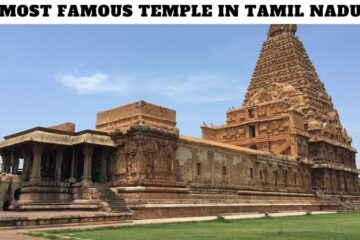
The Sri Venkateswara Swamy Vaari Temple, also known as the Tirumala Temple, Tirupati Temple, or Tirupati Balaji Temple, is a beacon of faith nestled amidst the seven hills of Tirumala in Andhra Pradesh, India. Dedicated to Lord Venkateswara, a form of the Hindu god Vishnu, the temple is not just a place of worship; it’s a pilgrimage destination that draws millions of devotees every year, making it one of the most visited religious sites in the world.
This blog delves into the rich history, architecture, rituals, and significance of the Sri Venkateswara Swamy Vaari Temple, offering a glimpse into the spiritual haven it represents.
Sri Venkateswara Swamy Vaari Temple Timing
The Sri Venkateswara Swamy Temple timings can be categorized into two main aspects:
- Darshan Timings: This refers to the hours when devotees can have a glimpse (darshan) of the Lord Venkateswara idol. The timings generally follow the sunrise and sunset:
- Morning: 5:00 AM to 2:00 PM
- Evening: 4:00 PM to 9:00 PM
It’s important to note that these are general timings and may vary depending on special occasions or festivals.
- Temple Opening and Closing: The temple complex itself might have slightly different opening and closing hours compared to darshan timings. It’s best to consult the official Tirumala Tirupati Devasthanams (TTD) website for the most up-to-date information regarding these timings.
A Legacy Etched in Stone: Unveiling the Temple's History
The origins of the Sri Venkateswara Swamy Vaari Temple remain shrouded in the mists of time. Legends attribute its construction to the sage Vakratunda, while historical evidence suggests the temple’s development occurred over centuries, with contributions from dynasties like the Pallavas, Cholas, Pandyas, and the Vijayanagara Empire. Inscriptions dating back to the 3rd century CE point to the existence of a shrine dedicated to Vishnu on the Tirumala hills. The temple gradually grew in prominence, with each ruling dynasty adding its architectural and artistic flourishes.
A Marvel of Dravidian Architecture
The Sri Venkateswara Swamy Vaari Temple exemplifies the grandeur of Dravidian architecture. The towering gopurams (gateway towers) adorned with intricate carvings and sculptures are a sight to behold. The seven prakaras (enclosures) surrounding the sanctum sanctorum (innermost shrine) house various shrines and halls, each serving a specific purpose in the temple’s daily rituals.
The Ananda Nilayam, the sanctum sanctorum, enshrines the revered deity, Lord Venkateswara. The idol, sculpted from black granite, depicts the god standing tall, adorned with jewels and radiating divine grace. The intricate carvings on the walls and pillars narrate stories from Hindu mythology, transporting devotees to a realm of celestial beauty.

Seva: The Heartbeat of the Temple
The Sri Venkateswara Swamy Vaari Temple pulsates with a rhythm of daily rituals and sevas (services) dedicated to Lord Venkateswara. The Suprabhata Seva, a pre-dawn awakening ceremony, marks the beginning of the day. Archana (offering prayers), abhishekam (sacred bathing of the idol), and aarnajyoti (offering of lamps) are performed throughout the day. The elaborate Sahasra Deepalankara Seva, where the temple is illuminated with thousands of oil lamps, is a breathtaking spectacle that showcases the sheer scale of devotion.
Darshan: A Glimpse of the Divine
For devotees, the ultimate aspiration is to have a darshan (holy sight) of Lord Venkateswara. The queues for darshan can stretch for miles, with pilgrims waiting for hours for a fleeting glimpse of the deity. Yet, the wait is imbued with a sense of anticipation and devotion, creating a powerful sense of community among pilgrims from all walks of life.
Festivals: A Celebration of Faith
The Sri Venkateswara Swamy Vaari Temple comes alive during numerous festivals throughout the year. The Brahmotsavam, a nine-day extravaganza, is a highlight. The processional deities are adorned with opulent silk clothes and jewels, and massive chariots carrying the idols are pulled by devotees in a display of immense devotion. Vaikunta Ekadashi, a festival celebrating Lord Vishnu’s celestial abode, Vaikunta, witnesses special darshan arrangements where devotees walk through corridors adorned with elaborately carved wooden panels depicting scenes from Vaikunta.
Beyond the Temple Walls: A Legacy of Service
The Sri Venkateswara Swamy Vaari Temple is not just a religious center; it also undertakes extensive social welfare initiatives. The Tirumala Tirupati Devasthanams (TTD), the temple’s governing body, operates numerous educational institutions, hospitals, and guest houses. The TTD also provides free food (prasadam) to thousands of devotees daily, exemplifying the temple’s commitment to social responsibility.
A Beacon of Hope and Inspiration
The Sri Venkateswara Swamy Vaari Temple transcends geographical and cultural boundaries. It represents a universal yearning for spiritual connection and inner peace. The unwavering faith of devotees, the dedication of priests, and the grandeur of the temple itself combine to create a powerful experience that leaves a lasting impression. Whether you’re a devout Hindu or simply seeking a glimpse into a vibrant spiritual tradition, the Sri Venkateswara Swamy Vaari Temple offers a unique and unforgettable experience.
Unexplained Phenomena and Legends
The Sri Venkateswara Swamy Vaari Temple is shrouded in a veil of mystery. Legends abound, like the one about the never-ending supply of hair for the deity’s adornment. Devotees offer their hair as a token of devotion, and it’s said that the hair mysteriously grows back at an incredible rate, always meeting the needs for adorning the idol.
Another unexplained phenomenon is the permanent wetness on the deity’s feet, despite being housed within the sanctum sanctorum. There’s no logical explanation for this constant moisture, adding to the temple’s mystique.
A Spiritual Journey for All
The Sri Venkateswara Swamy Vaari Temple offers a unique spiritual experience for everyone. Whether you’re seeking a moment of solitude amidst the chanting of hymns, witnessing the grandeur of the rituals, or simply soaking in the vibrant atmosphere, the temple caters to individual spiritual needs. It’s a place where faith transcends language, culture, and social barriers.
A Call to Action: Planning Your Pilgrimage
If you’re considering a pilgrimage to the Sri Venkateswara Swamy Vaari Temple, planning is crucial. The TTD website offers information on darshan bookings, accommodation options within Tirumala, and essential guidelines for a smooth visit. Remember, the experience is about more than just seeing the deity; it’s about immersing yourself in the vibrant tapestry of faith and devotion that defines this sacred space.
How To Reach Sri Venkateswara Swamy Vaari Temple?
The Sri Venkateswara Swamy Vaari Temple is situated in Tirumala, Andhra Pradesh, India. Here are the ways you can reach this holy abode:
- By Air: The nearest airport is Tirupati International Airport (MAA), located about 15 kilometers from Tirumala. Several domestic airlines operate flights to Tirupati from major cities in India. From the airport, you can hire taxis, cabs, or utilize APSRTC buses to reach Tirumala.
- By Train: Tirupati Railway Station (TIRU) is well-connected to major cities across India. Once you reach Tirupati, you can take a cab, taxi, or an auto-rickshaw to reach Tirumala. Alternatively, the APSRTC operates regular bus services from the railway station to Tirumala.
- By Road: Tirupati is well-connected by road to major cities and towns in South India. APSRTC operates frequent bus services to Tirumala from various locations. You can also drive your car or hire a taxi to reach Tirumala.
Here are some things to keep in mind when traveling to Tirumala by road:
- Traffic: Tirumala can get crowded, especially during peak seasons and festivals. Be prepared for traffic congestion, particularly on the ghat road leading up to Tirumala.
- Parking: Parking can be a challenge in Tirumala. It’s advisable to book your accommodation in advance, as some hotels and guesthouses provide parking facilities for guests.
- Ghat Road: The road leading up to Tirumala from Tirupati is a ghat road with steep curves and hairpin bends. Drive cautiously and follow traffic regulations.
No matter which mode of transportation you choose, reaching the Sri Venkateswara Swamy Vaari Temple is a journey filled with spiritual anticipation.
FAQs on Sri Venkateswara Swamy Vaari Temple
1. Who is enshrined in the temple?
Ans. The temple houses Lord Venkateswara, also known as Srinivasa, Balaji, and Govinda. He is an incarnation of Vishnu, the Hindu god of preservation.
2. What is the significance of the temple?
Ans. The Sri Venkateswara Swamy Vaari Temple is one of the most sacred and most visited pilgrimage sites in the world for Hindus. Devotees believe a visit brings blessings and salvation.
3. How old is the temple?
Ans. The exact age is unknown, but estimates range from a few thousand to over 3000 years old.
4. What are some interesting facts about the idol?
- The idol’s hair is real and believed to be donated by a princess. Devotees continue this tradition by offering their hair.
- The idol appears to be in the center of the sanctum sanctorum but is actually positioned to the right.
- Oil applied to the idol mysteriously condenses as “sweat” on its back.
5. Are there any other deities in the temple?
Ans. Yes, there are four additional murtis (idols) associated with Lord Venkateswara for specific rituals and festivals.
6. How can I plan a visit?
Ans. Due to the temple’s immense popularity, planning well in advance is recommended. You can find information on darshan (seeing the deity), sevas (services), and accommodation on the Tirumala Tirupati Devasthanams website [official tirumala tirupati devasthanams ON Tirumala Tirupati Devasthanams.
7. What is the best time to visit?
Ans. There is no single “best” time. Weekdays tend to be less crowded than weekends and festivals. Be prepared for crowds regardless of the time of year.
8. What is the dress code?
Ans. Devotees are expected to dress modestly. For men, this means dhoti or kurta pajama. For women, sarees or salwar kameez are appropriate.
9. Are there any special offerings I can make?
Ans. Yes, there are many offerings available, including hair, coconuts, and lamps. Consult the temple website or a priest for specifics.
10. What are some other things to see and do in Tirumala?
Ans. Many other temples and shrines are located in Tirumala, including the temple of Padmavati, Lord Venkateswara’s consort. Scenic beauty spots and natural wonders are also part of the Tirumala experience.


